MELAKA, Sept 8 — What’s so Peranakan about Malaccan cendol and laksa?
This is a question my friends who are visiting my hometown sometimes ask me. They have read the travel guides, yet are still leery of tourist traps. They want a local boy’s knowledge and advice.
I rarely give them an answer that satisfies them. For most Malaccans, the best dishes are the ones our mothers and grandmothers cook at home; everything else is by definition a tourist trap.
That’s not necessarily a bad thing. Even the locals need places to bring their friends who are visiting; we can’t burden the matriarchs in our families to cook up a storm every time we play tour guide.
The much maligned Jonker Street is an easy out for us: there are a multitude of small shops and cafés, and nearly every restaurant advertises their authentic Peranakan fare. (The rest appear to be pubs and drinking holes; I’m pretty sure these have Peranakan-themed cocktails too.)
History and architecture will beguile our friends, keep them happy so they don’t notice the exorbitant prices (especially if we manage to grab the bill first, which, as hosts, we had better).
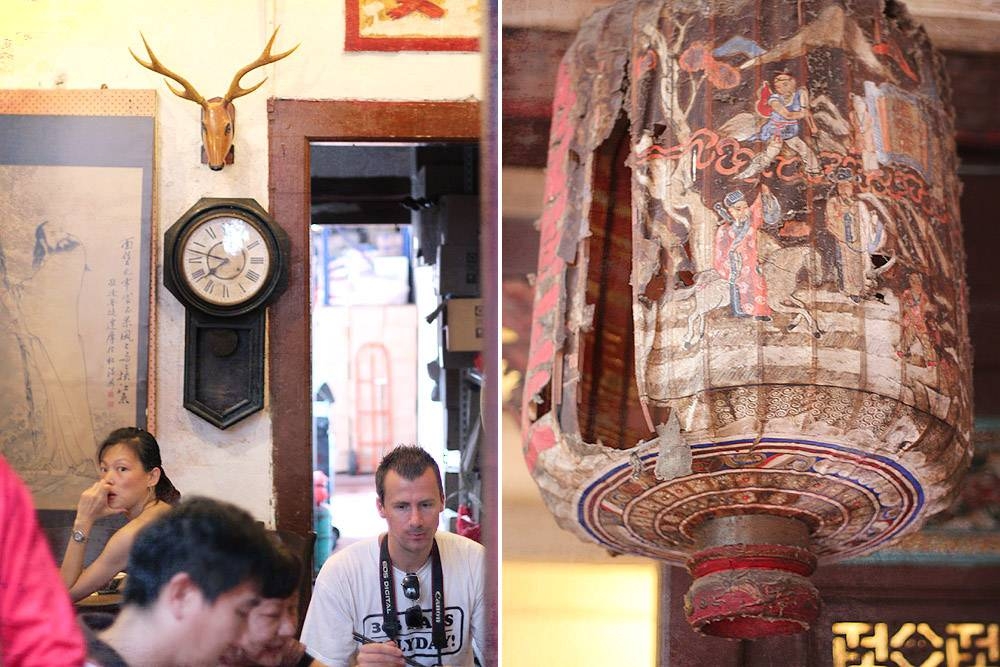
So while I don’t have an exhaustive answer for them, my friends still perk up when I bring them to Jonker88 for Malaccan cendol and laksa. (Everyone goes there, or it feels that way. Post-pandemic, the crowds have returned, slowly and surely.)
Entering, we are always greeted by the encouraging sight of other diners enjoying the casual Peranakan fare (and almost immediately panicking when we observe there’s nary an unoccupied table left).
The choice of cendol is rather straightforward; we won’t bother with all the levelled up options (the durian version has durian syrup rather than actual durian flesh, for instance). Instead the basic Baba Cendol is the way to go, drizzled with gula Melaka and santan (coconut cream).
Then there is which Peranakan laksa to decide upon: either the Nyonya Assam Laksa or the Baba Laksa.
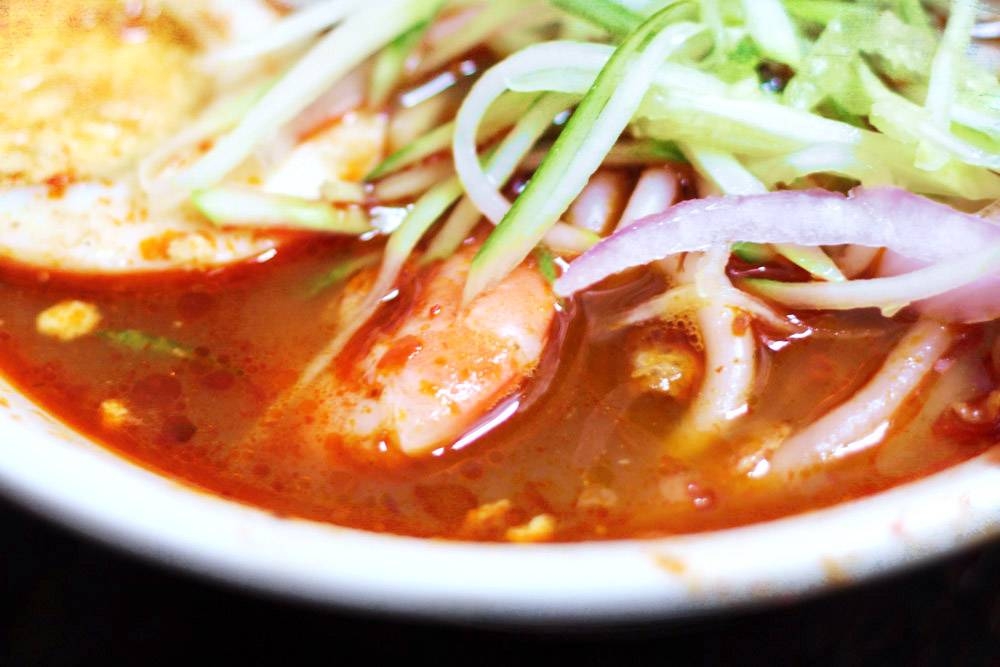
Both bowls have prawns, a spoonful of tuna, half a hard boiled egg, pieces of deep fried bean curd skin, julienned cucumber and red onion. The main difference lies in the noodles used as well as the soup.
Lai fun, a short and thick variety of rice noodles, is used for the Nyonya Assam Laksa, whereas the Baba Laksa features the thinner, longer rice vermicelli or meehoon. The noodle selection might boil down to the cook’s personal preference or perhaps the viscosity of the soups.
The Nyonya Assam Laksa has a spicy and tangy soup, whilst the equally fiery Baba Laksa is creamier from the santan used. The latter also benefits from some cubes of taufu pok; the porous bean curd pouches soaking up all the coconut milk broth.
We have brought many friends here over the years. My university debating friend, Satomi, from Tokyo, who marvelled at how each seemingly disparate ingredient married so well with each other.
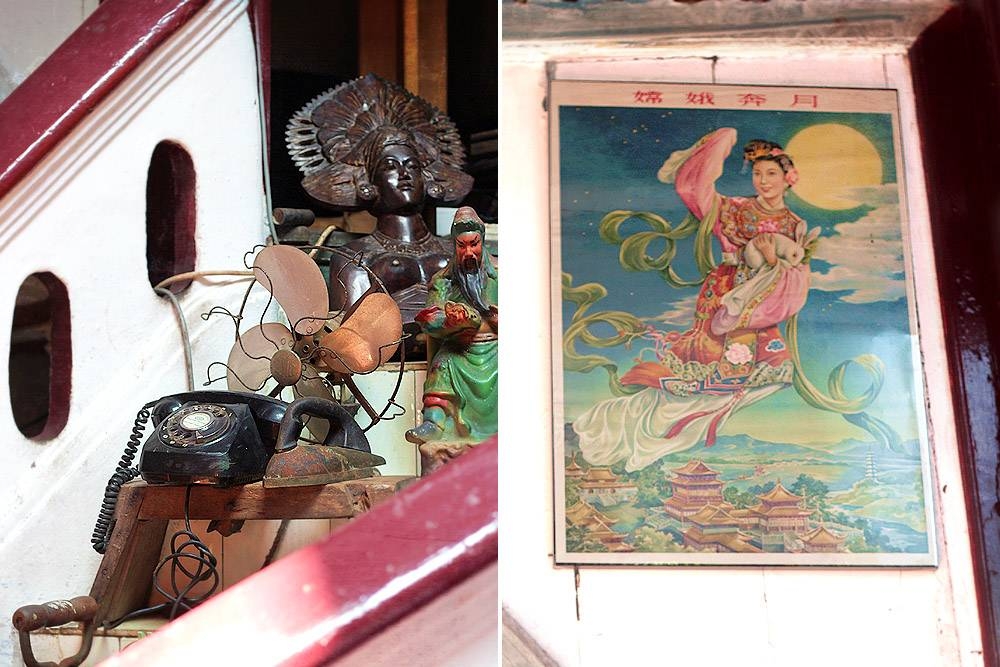
Our friend Paul, from New York, who spoke Cantonese with a delightful American accent, had trouble finishing all the food. He was stick thin and I, being heftier back then, made sure nothing was wasted. He’s bulkier now; perhaps he’s found some good Malaccan cendol and laksa in NYC.
Years later, Jenny from Taipei and Jess from Hong Kong visited; one girl telling us stories of all the adventures she had around the world, the other deeply occupied with slurping every last strand from her bowl of laksa.
Various bric-à-brac have become part of the décor over time. (Perhaps they are antiques; perhaps they are just old.) These are arranged and rearranged over the years. Some have disappeared since my early visits; others collected and encased in tidy cases.
What perhaps began as a serendipitous clustering of different currencies left by tourists over the years is now a museum-worthy collection of banknotes from around the world. The lesson here is things change; they always do.
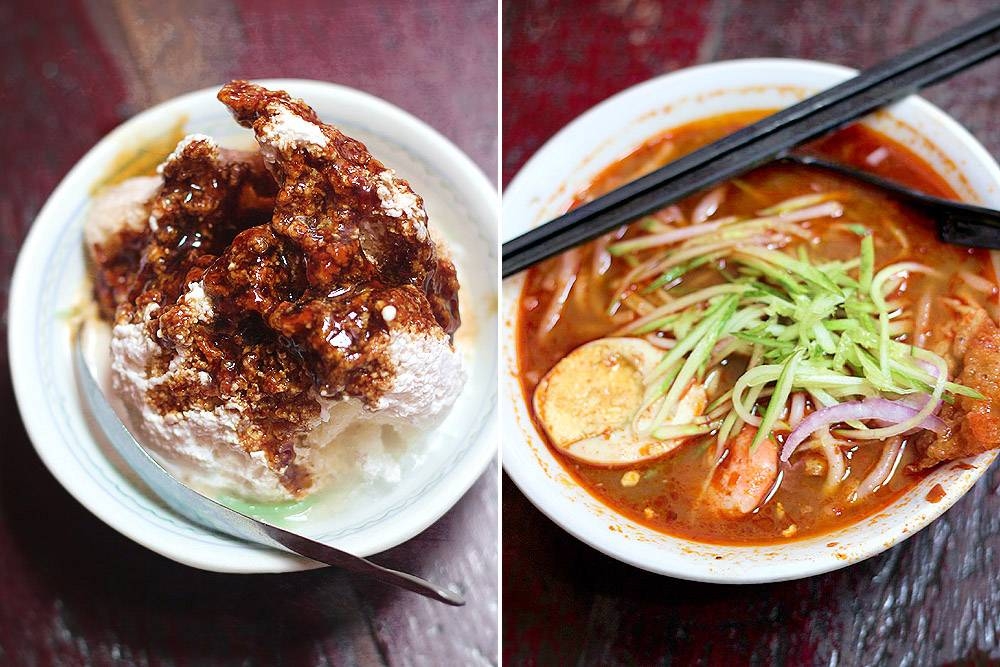
It’s been over a decade, maybe 15 years now, since I brought my Italian friend Manuel and his new bride, Gosia, to Jonker Street when they visited for their honeymoon. Of course, I took them for Malaccan cendol and laksa.
I remember Manuel and Gosia enjoying the switch up, having their dessert before their main dish, as it were. A perfect Peranakan pairing of Baba Cendol and Nyonya Assam Laksa, the way they were a perfect pairing of Italian boy and Polish girl.
Years pass. My friends have two sons now, their crowns blond even as their father’s hair turned a silver grey prematurely. Perhaps one day the Mazzas will be back, a quartet now, and I will show the boys where their parents had one of their honeymoon meals.
As we leave, I noticed the framed picture of two animals on the wall. Not a painting or a poster but actual sculptures, small and stained with age.
Mythical Chinese creatures, I first assumed that they were tóngshī, bronze guardian lions. A closer inspection had me reconsidering my initial guess; these were probably qílín, with what looked like manes flowing gracefully heavenward.
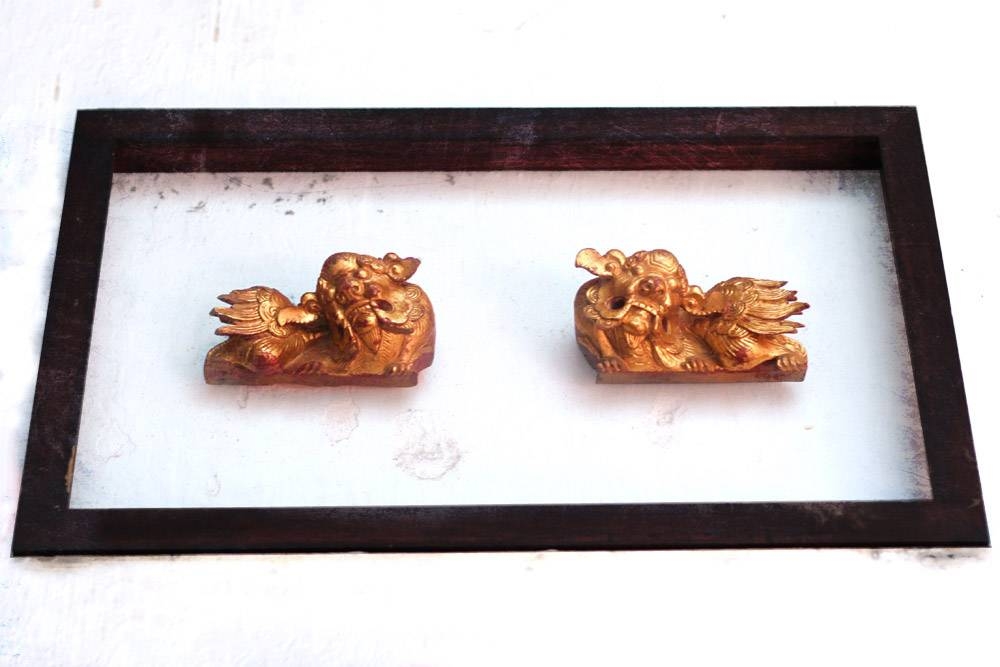
Whichever they were, they were part of a centuries-old cultural migration. Here, in this shop where even the doorways are flavoured with memories and heritage, they fit right in with the fare on offer.
What’s so Peranakan about Malaccan cendol and laksa? I don’t have an answer, but if there is one, then it’s perhaps in the stories that they tell.
For me, it’s never about the food (a Malaccan knows home cooked is always the best) but the memories of my good friends and the conversations we had, sweeter than gula Melaka and dreamier than santan.
Like these Chinese guardian lions (now I’m convinced they are tóngshī after all, for qílín have horns and these don’t) guiding our way as we depart, blessing us with safety and protection, it’s the taste of the narratives that we remember, long after the bowls have been washed, dried and put away.
Jonker88
88, Jalan Hang Jebat, Melaka
Open Sun-Wed 9:30am-6pm, Thu 9:30am-6:30pm, Fri & Sat 9:30am-7:30pm
For more slice-of-life stories, visit lifeforbeginners.com.






















